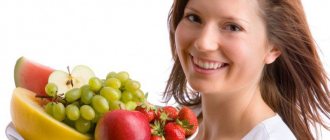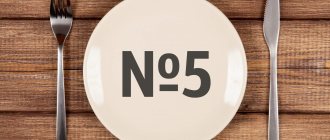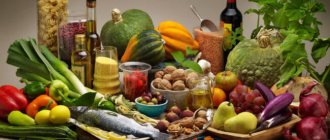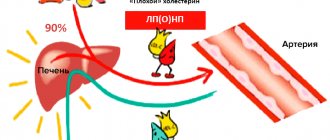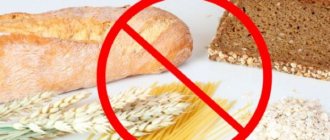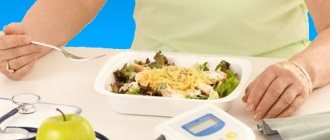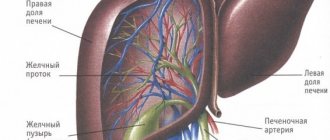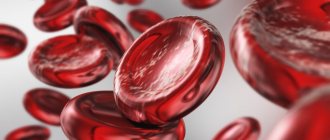M.I. Pevzner, a renowned therapist during the Soviet Union, made a huge contribution to the development of domestic medicine. The doctor devoted his scientific works to many aspects of the treatment of various pathologies of the body, but did not hide his specialized attachment to gastroenterology and dietetics.
Perhaps it was Pevzner who was one of the first to seriously talk about the relationship between human nutrition and the treatment of his ailments. Studying the relationship between diet and treatment of various diseases, the therapist formed a nutrition system that consists of 15 specialized diets for the treatment of basic groups of diseases.
Each diet is called a “table”, the focus of which is different. Some diets are aimed at increasing the effect of gastrointestinal therapy, others - the excretory system, and others - the heart and blood vessels. In today’s material we will talk about Pevzner’s dietary nutrition according to the 1st table, clarifying its profile focus and principles of organization. Interesting? Then be sure to read the material below to the end.
What is diet No. 1 according to Pevzner
Dietary table number 1 was created by the Soviet nutritionist M.I. Pevzner and has been practiced for several decades. Diet 1 is considered strict, but it is the one that supports the proper functioning of the gastrointestinal tract and helps to recover in the safest way during periods of various diseases.
shutterstock.com
Such a diet, with adequate nutrition, reduces chemical, mechanical and thermal effects on the gastrointestinal tract, reduces internal inflammation, accelerates the healing of ulcers and normalizes stomach functions. A person eats, maintaining the BJU ratio, but limits the impact of pathogens and irritants on internal organs. Food is consumed mashed, boiled in water or steamed; dishes are prepared without breading or crust.
shutterstock.com
Each patient, without exception, is prescribed a diet by a gastroenterologist. This is due to the fact that the treatment program is divided into several “tables”: 1, 1a, 1b. Only a doctor determines what type of nutrition a sick person needs.
General principles of therapeutic nutrition for gastritis
Therapeutic nutrition for illnesses has its own characteristics. Let's talk about general recommendations regarding diet for those who are diagnosed with gastritis or suspect it.
Among these are the following:
- fractional diet in small portions 5-6 times a day;
- compliance with the diet, no long breaks between meals;
- food should be taken slightly warm (hot and cold foods and drinks are contraindicated);
- the consistency of the food should be as homogeneous as possible (food is ground, porridges are boiled, preference is given to soups with light broth or puree soups, as well as other liquid and semi-liquid dishes);
- foods should not irritate the gastric mucosa, therefore anything spicy, too salty, sour (an exception is made only for gastritis with low acidity of gastric juice), fried is prohibited;
- food should be boiled or steamed (in some cases, during the period of remission, frying without breading with a small amount of oil is allowed);
- Alcohol and any carbonated drinks are prohibited.
Diet table 1: products
Acceptable foods and dishes can be divided into the following groups:
- Soups: slimy consistency, you can add semolina, oatmeal, pearl barley or rice, cream or butter;
- Cereals: liquid slimy porridges made from semolina, pureed buckwheat, rice or oatmeal. You can also add cream or milk;
- Meat and fish: lean veal, beef, chicken and turkey, without skin, fat, fascia and tendons. To prepare it, you need to boil it, pass it through a grater or meat grinder, and use it as a puree or soufflé;
shutterstock.com
- Eggs: soft-boiled or steamed omelet, no more than three eggs per day;
- Fruits and berries: sweet fruits, boiled or baked; compotes, rosehip decoction;
- Dairy products: milk, cream, steam soufflé from freshly prepared pureed cottage cheese.
- Drinks: weak tea with milk or cream, weak cocoa or coffee with milk;
- Additionally: jelly, sweet fruit jelly, milk jelly, honey.
- Excluded: vegetables, herbs, sweets and flour.
Dishes are prepared in unsalted butter or refined vegetable oil. Other types of oils are excluded.
shutterstock.com
Indications for use.
Therapeutic diet No. 1 according to Pevzner is recommended for people with peptic ulcers of the stomach and duodenum during the period of recovery after a sharp exacerbation, as well as during exacerbation of these diseases. The same diet is prescribed for exacerbation of chronic gastritis with preserved or increased secretion, as well as during the period of exacerbation after acute gastritis.
Nutritional features.
The main feature of treatment table No. 1 is the moderation of chemical, mechanical and thermal effects on the gastrointestinal tract. The diet limits foods that strongly stimulate the secretion of the stomach, irritate its mucous membrane, and are difficult or take a long time to digest. The main part of food is prepared in pureed, liquid or mushy form; it is boiled in water or steamed. Dishes can be baked, but without a crust. Fish and lean meats can be served in pieces. Too cold and very hot dishes are excluded from the diet. Salt is limited. Also limit foods containing a lot of fiber. It is recommended to take food in small portions, quite often - five to six times a day. By following such a diet, inflammation decreases, ulcers heal faster and easier, and the secretory and motor functions of the stomach return to normal.
Chemical composition and energy value.
Proteins – 90-100 g (60% animal), fats – 100 g (30% vegetable), carbohydrates – 400-420 g, table salt – 10-12 g, free liquid – 1.5 l.
The calorie content of the diet is 2800-3000 kcal. Product table
| Authorized Products | Prohibited Products |
| Bread products | |
| White wheat bread made from premium and 1st grade flour, yesterday's baking or dried, dry biscuit, white crackers, uncooked cookies. Once or twice a week, baked savory buns, baked pies with apples, jam, and cheesecake with cottage cheese are allowed. | Rye bread and any fresh bread, pastry and puff pastry products. |
| Milk and dairy products | |
| Whole, dry or condensed milk, cream, fresh non-sour cottage cheese, non-sour kefir, yogurt. Mild, unsalted varieties of cheese in grated form, and occasionally. You can prepare cottage cheese dishes: baked cheesecakes, soufflé, lazy dumplings, puddings. | Spicy, salty, hard cheeses, dairy products with high acidity. Sour cream is allowed to be consumed in limited quantities. |
| Soups | |
| Soups made from vegetable broth, from pureed and well-cooked cereals, puree soup from boiled vegetables (except cabbage), milk soup with small noodles. You can season first courses with butter, egg-milk mixture, and cream. | Soups from strong meat and fish broths, mushroom and strong vegetable broths, cabbage soup, borscht, okroshka. |
| Meat and meat dishes | |
| Lean meats, without tendons, fascia, or poultry skin. Steamed dishes made from beef, young lean lamb and trimmed pork, chicken, turkey, lean veal, chicken, and rabbit will be beneficial. Cutlets, meatballs, zrazy are steamed. Beef Stroganoff is made from boiled meat. Boiled tongue and liver are also allowed. | Fatty and stringy varieties of meat and poultry, duck, goose, canned meat, any smoked meats. |
| Fish and fish dishes | |
| Low-fat varieties of fish, without skin, cooked in pieces or in the form of cutlets. Fish should be boiled in water or steamed. | Fatty, salty fish, canned fish. |
| Cereals and pasta | |
| Semolina, buckwheat, oatmeal, rice. Porridges made from these cereals are cooked in milk or water. Vermicelli or pasta are allowed finely chopped, boiled. | Pearl barley, barley, corn, millet, legumes. |
| Vegetables | |
| Potatoes, carrots, beets, cauliflower. Green peas are allowed in limited quantities. Vegetables should be steamed or boiled in water. Vegetable dishes should be pureed, for example, mashed potatoes, soufflés, steam puddings. You can eat early pumpkin and zucchini ungrated. Finely chopped dill can be added to soups. Ripe non-acidic tomatoes can also be present in the diet, but not more than 100 g. | White cabbage, turnips, radishes, sorrel, spinach, onions, cucumbers. All salted, pickled and pickled vegetables. Mushrooms, canned vegetable snacks. |
| Eggs and egg dishes | |
| Soft-boiled eggs, steamed omelettes, but limited - no more than two per day. | Hard-boiled and fried eggs. |
| Fats | |
| Unsalted butter, refined vegetable oils added to dishes. | |
| Snacks | |
| Salads from boiled vegetables, meat, fish, boiled tongue, liver pate. Doctor's, milk and diet sausages are also allowed in small quantities; jellied fish in vegetable broth; sturgeon caviar, occasionally soaked lean herring. | Any spicy and salty snacks, canned food, smoked meats. |
| Berries and fruits | |
| Sweet varieties of ripe fruits and berries, berries from compotes. Berries and fruits in pureed, boiled and baked form, jelly, mousse, jelly. | Sour, insufficiently ripe fruits and berries, unprocessed dried fruits. |
| Sweets | |
| Sugar, honey, marshmallows, marshmallows, sour jam. | Chocolate and ice cream. |
| Beverages | |
| Weak tea, tea with milk or cream, weak cocoa with milk or cream, weak juices from fruits and berries, rose hip decoction. | All carbonated drinks, kvass, black coffee. |
Two types of treatment table No. 1.
There are two types of treatment table No. 1, which are designated No. 1a and No. 1b, respectively. Table No. 1a is recommended in the very first days of exacerbation of the above diseases, that is, in the first three to eight days of treatment. When following this diet, even from the permitted foods listed above, it is advisable to exclude vegetables, snacks, dairy products, cheese and sour cream, as they can greatly irritate the digestive organs. After that. Once the acute stage of the disease has passed, table No. 1b is recommended, in which the prohibitions of diet No. 1a are lifted.
Recipes
Diet pate
Ingredients: 100 g beef, two potatoes, medium carrots.
Boil the products, pass through a meat grinder: pour ½ cup of milk into the prepared minced meat, stirring, and simmer over low heat. Remove after 3-5 minutes, add a little salt.
Egg porridge
Ingredients: two eggs, 60 ml of milk, a little salt, two teaspoons of butter.
Dissolve eggs with milk, beat, add a little salt, add butter. Pour the resulting mass into a small bowl and place it in a pan of water. Cook, stirring constantly, until the consistency of porridge.
Pour the egg mixture into a saucepan with a small amount of warm water, cook like regular porridge until thickened. Strain the rest of the water.
Carrot soufflé with cottage cheese and honey
Ingredients: 500 g carrots, 250 g cottage cheese, 150 g milk, teaspoon sugar, egg, 50 g semolina, cube of butter.
Cut the carrots into pieces, pour in milk, boil until tender. Grate or beat in a blender, add grated cottage cheese, sugar, yolk and semolina. Mix the mixture well, and only then add the whipped egg white. Place in a bowl greased with oil and steam. If desired, serve with honey.
Curd soufflé
Ingredients: 250 g of cottage cheese (up to 9% fat), three eggs, a little sugar, 250 ml of milk, semolina flour.
Wipe the cottage cheese, add the yolk, sugar, milk, flour. Beat and add the whites, mix the mixture well. Place in a mold and steam. Serve with condensed milk.
Baked cutlets
Ingredients: 2 tablespoons of cottage cheese (fat content up to 9%), egg, 150 g of beef, butter.
Meat without tendons and fascia: boil and cool. Pass the beef and cottage cheese through a meat grinder twice. Beat the egg, leave a small part to grease the cutlets, pour the rest into the minced meat. Add oil, mix well until smooth. Form cutlets, place on a baking sheet, brush with egg. Bake in the oven until done.
Nutrition for gastritis with low acidity
It happens that the stomach, on the contrary, secretes too little hydrochloric acid, then the food is not digested well enough, and the body cannot take the vitamins, minerals and nutrients they contain from the food. In this case, a diagnosis of “gastritis with low acidity” is made.
The main goal of therapeutic nutrition for such gastritis is to stimulate the production of gastric juice and enzymes necessary for digesting food, and to speed up the passage of food into the intestines.
You need to adjust your diet as follows:
Prohibited foods for gastritis:
- fatty foods, in particular meat and fish (goose, pork, lamb, salmon);
- sweets with cream;
- deep-fried dishes;
- vegetables and fruits that cause flatulence (fresh cabbage, garlic, onions, legumes, grapes);
- pure milk;
- porridge with a solid consistency;
- pickles, canned food, marinades, smoked meats;
- radishes and cucumbers;
- rich pastries.
Allowed foods for gastritis:
- boiled porridge;
- boiled and baked vegetables;
- fruits, maybe even sour ones;
- fermented milk products (kefir, fresh cottage cheese);
- mashed dishes;
- soups, meat and fish broths;
- fried foods without breading and baked crust, with a small amount of oil;
- bakery products and savory pastries;
- lean types of meat and fish;
- juices, tea, coffee, still mineral water.
Diet menu No. 1
Breakfast:
- meat pate with whole grain baguette, baked apple, tea;
- sandwich with cheese, liquid semolina porridge, tea;
- steam omelette, bread, tea with milk;
- oatmeal with milk and pears, green tea;
- soft-boiled egg, rice milk porridge, tea with milk;
- fresh non-acidic cottage cheese, rosehip decoction;
- steam omelette, crumbly buckwheat porridge, tea with milk;
- steam omelette, noodles with grated cheese, weak tea, berry jelly.
shutterstock.com
Lunch:
- baked fruits with honey or powdered sugar;
- marshmallows with tea;
- berry jelly, compote;
- curd pudding;
- baked apple with sugar.
- fresh non-acidic cottage cheese, rosehip decoction;
- pudding, soufflé;
- compote with dry cookies or biscuits.
Lunches:
- vegetable soup, boiled buckwheat with chicken fillet, carrot and spinach salad;
- puree soup of broccoli, chicken and potatoes, banana with cottage cheese;
- soup without meat, noodles with steamed meatballs, bread;
- rice soup with pureed minced meat, fruit jelly;
- pureed oatmeal soup, steamed fish soufflé, fruit jelly;
Dinners:
- buckwheat porridge with milk;
- semolina porridge with milk, egg omelet, sweet tea with milk;
- meat soufflé, cottage cheese casserole, jelly;
- acceptable cereals with steam cutlets, milk;
- mashed potatoes with chicken, bread;
- steamed rice and cutlets.
Menu for one day (without chopping food)
- 1st breakfast: egg, crumbly buckwheat, black tea with milk.
- 2nd breakfast: decoction of rose hips, fresh non-acidic cottage cheese.
- Lunch: vegetarian soup with potatoes, boiled or baked meat, boiled carrots. We drink compote made from dried fruits.
- Afternoon snack: wheat bran boiled with sugar and breadcrumbs.
- Dinner: baked or boiled fish with sauce, apple and carrot puree, black tea with milk.
- Before going to bed, drink a glass of milk or cream.
Table 1a
Therapeutic diet option table 1A is one of diet No. 1. Usually the diet is prescribed in the first week of treatment for an exacerbation of a peptic ulcer or for gastritis during an exacerbation. The menu is more abbreviated, but the treatment period is also shorter. Among the features: food should be warm, proper drinking balance, daily calorie content - 2000 kcal. You need to eat in small portions, five to six times a day.
shutterstock.com
Flour, raw fruits and vegetables, sour cream, cottage cheese, cheese, sauce, and spices are excluded. You can eat soft, porridge-like foods without additives, boil or steam food.
Channel about healthy lifestyle in telegram! Subscribe
Indications for prescribing treatment table No. 1
Medical diet number 1 is prescribed for:
- peptic ulcer;
- exacerbation of chronic gastritis with normal or high acidity;
- acute gastritis in the recovery stage;
- with gastroduodenitis;
- infectious diseases of the gastrointestinal tract (in the absence of diarrhea);
- diaphragmatic hiatus hernia;
- the indication for the appointment of table No. 1 is gastrointestinal oncology.
The main symptoms of gastrointestinal diseases: pain in the epigastric region, nausea, vomiting, belching, loss of appetite. The appearance of one or more symptoms is a reason to visit a doctor. Diet table 1 is designed to provide peace to the gastric mucosa and the possibility of its speedy recovery.


